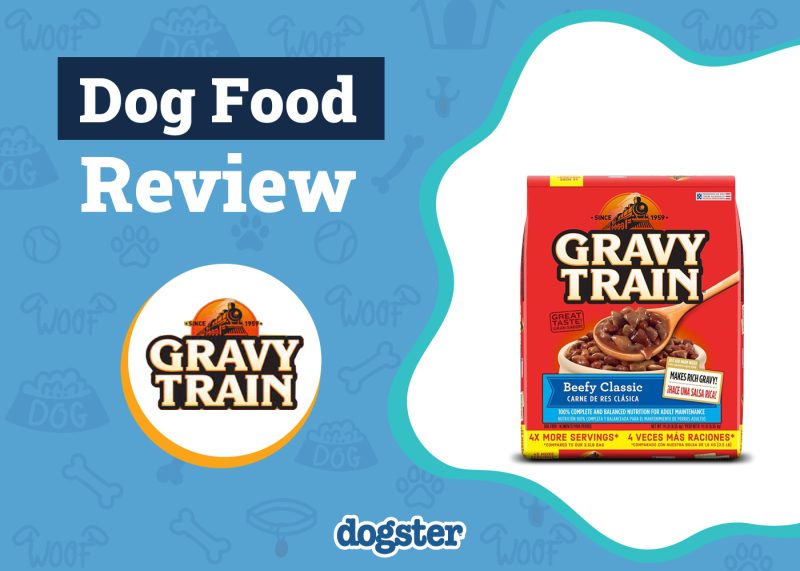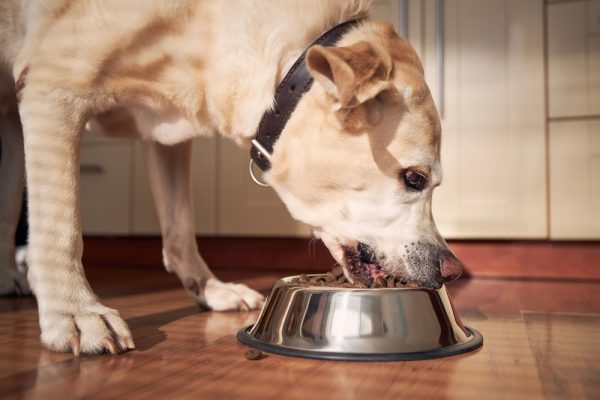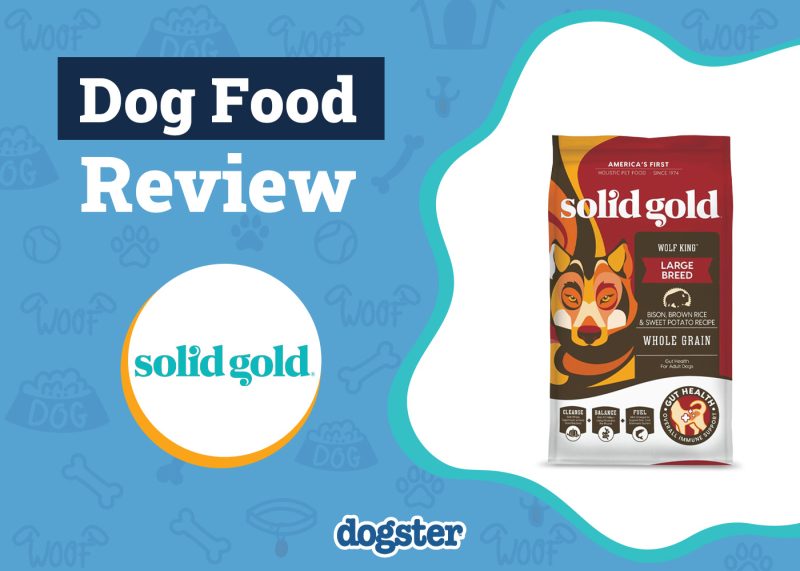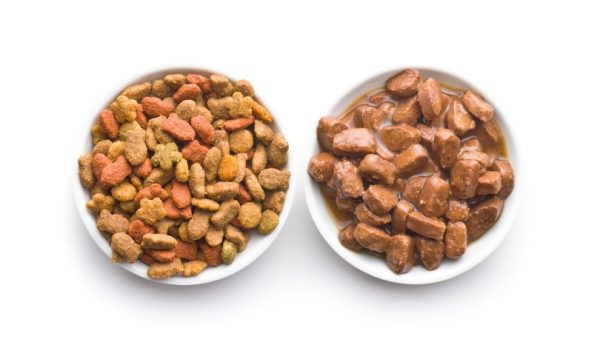In this article
If you look at the nutritional values of any bag of dog food, you might notice that one ingredient is conspicuously missing. Dog food companies are not required by law to post the percentage of carbohydrates in their food, but that may be changing soon. Carbohydrate content is difficult to guarantee as there is no standard laboratory test that would allow authorities to confirm manufacturer claims. There is a way to estimate the carbohydrate content of dog foods, however, this measurement is flawed and usually overestimated.
In this article we will discuss what carbohydrates are, how to roughly estimate the content, the limitations of these calculations, and the pros and cons of carbohydrates in the diet.

What Are Carbohydrates?
Carbohydrates are a group of organic compounds that contain carbon, hydrogen, and oxygen, with hydrogen and oxygen usually being present in the same ratio as in water (2:1). These compounds are a source of energy and include sugars, starch, and cellulose.
Fiber is a complex carbohydrate and is included in the guaranteed analysis of dog foods. Currently crude fiber is present in the analysis of most dog food; this represents the fiber that is not soluble, or doesn’t dissolve in water. A newer measurement, dietary fiber, is rarely included in pet foods, but is a better indicator of nutritional value of the food as it includes soluble fiber as well. It is important to understand the distinction as it will affect your carbohydrate calculation.
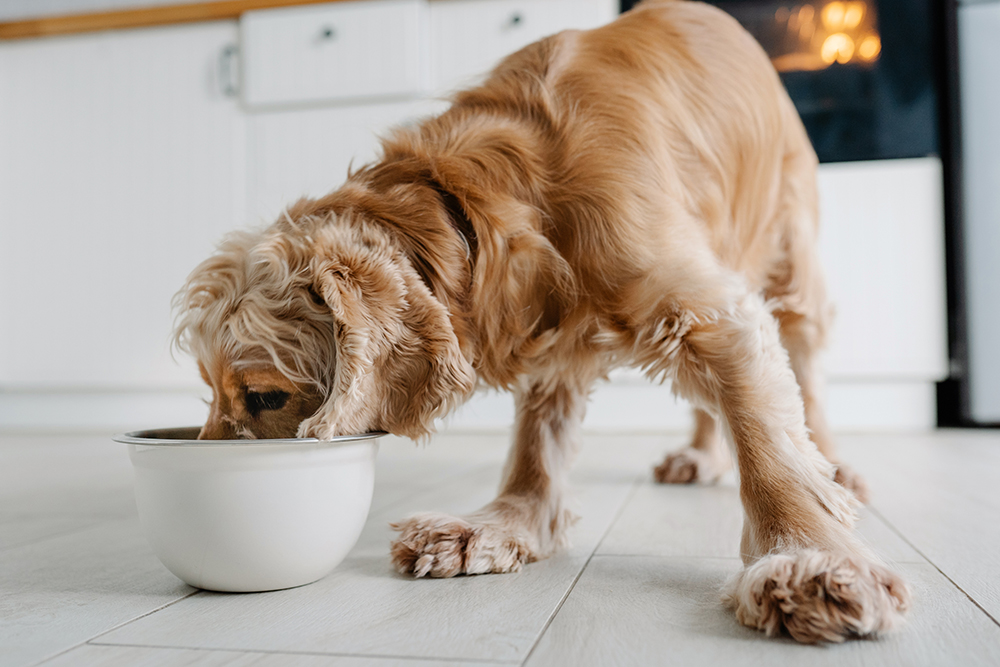
When we talk about carbohydrates in pet food we are mainly talking about theoretically digestible carbohydrates: soluble fiber, starch, and sugars. These sugars are natural sugars and not added sugar, and represent a smaller portion of the carbohydrates than starch.
Since there are no standard methods to measure the carbohydrates, this is estimated via a calculation of “nitrogen free extract”.

Pros of Carbohydrates
- Carbohydrates supply a source of calories and glucose to be used for energy.
- Carbohydrates are well tolerated by most dogs.
- Carbohydrates improve reproductive success.
- Dogs’ digestive systems have adapted to process carbohydrates.
- Carbohydrates are important in growing or reproducing dogs with high energy needs.
- Carbohydrates are necessary when there is a medical need to limit protein or fat.
Cons of Carbohydrates
- Grains form the bulk of most starches and some dogs have grain allergies or intolerances.
- Some people think carbohydrates are less “natural” for dogs.
- Carbohydrates like starch and sugar should be limited in pets with diabetes to improve blood glucose control.
- Carbohydrates are energy-dense, and may contribute to weight gain with poor portion control.
What Is Considered High Carbohydrate Content in Dog Food?
The value of the carbohydrates in dog food is worthless in a vacuum. The Association of American Feed Control Officers (AAFCO) does not mandate carbohydrate levels in dog foods as of yet, so you should discuss with your vet how much carbohydrate is appropriate for your pet. Carbohydrates as 30-60% of pet food is considered typical. Low carbohydrate dog food is considered to be anything less than 30%. The middle ground is 45%–55%. Anything over 55% carbohydrates is considered to be high carb content.
If you need to speak with a vet but can't get to one, head over to PangoVet. It's our online service where you can talk to a vet online and get the advice you need for your dog — all at an affordable price!

Nitrogen Free Extract
The nitrogen free extract (NFE) is often used as an estimate of carbohydrate content in dog food, but in reality it represents more than this. Simply put, the NFE is the remaining percentage after moisture, crude fiber, protein, fat, and ash have been removed from the food. Some companies will provide you this calculation if asked, or via their product guides.
Starch, soluble fiber, and sugars are included in this percentage as well as little things like vitamins. And, since NFE is a calculation, errors from other parts of the analysis will accumulate in this figure. The percentages on dog food bags are the minimum guaranteed values. That means that the food will contain, for example, a minimum of 26% protein, but that number can actually be higher for certain batches of food. So, the NFE measurement tends to overestimate the amount of carbohydrate that’s actually present but can give you a ballpark, upper limits figure.
This calculation is not the be all and end all for evaluating the carbohydrate content of a dog food. The source of the carbohydrate matters in terms of nutritional properties, metabolism, and digestibility, not just the amount, with some forms of carbohydrate being more superior than others.
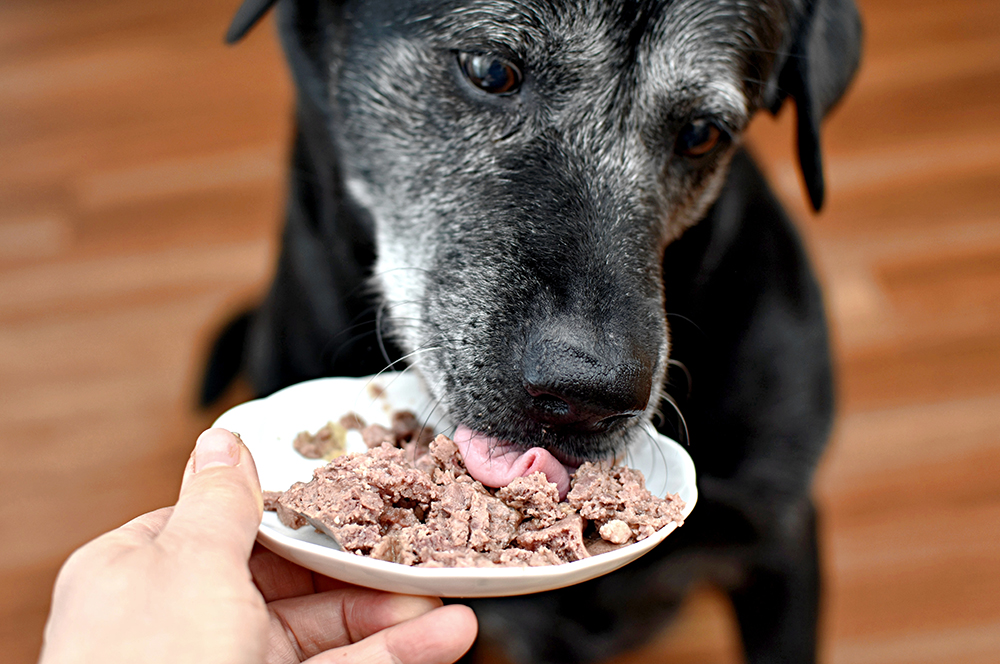

Calculating Nitrogen Free Extract
1. Know the Main Contents of All Dog Food
Dog food regulations require that manufacturers put minimum values of four macro ingredients on their nutritional labels. The four basic contents that must appear on every bag of dog food are fat, crude fiber, moisture, and protein. However, dog food also contains two other major ingredients that do not have to be listed on the label. Those two ingredients are ash and NFE. That leaves us with six total ingredients to keep track of, and the key to unlocking the percentage of carbs in dog food is solving for that particular variable.
2. All Main Dog Food Contents Must Equal 100%
Since these six main contents are everything that makes up dog food, the contents must equal a full 100% when added together.
Fat + Fiber + Moisture + Protein + NFE + Ash = 100%
Now, remember most dog foods will not include NFE or ash on their nutritional labels. Ash is typically 2% to 8% of your dog food’s content, and represents the minerals like calcium and phosphorus. You can use 8% for the ash calculation when adding up all of the main ingredients or, if you want a more accurate idea of ash content, contact your dog food manufacturer. In some cases ash may be listed on the label.

3. Add Up All of the Provided Main Contents (%)
Next, it is time to add up all of the main contents on the nutritional label. Every label must include fat, fiber, moisture, and protein. Find the nutritional label and jot down all of the provided values for each of these ingredients.
For example, Purina Pro Plan Adult Large Breed Chicken & Rice Formula Dry Dog Food contains the following posted ingredients.
- Protein: 26%
- Fat: 12%
- Fiber: 4.5%
- Moisture: 12%
- Ash: 8% (assumed)
Add all of these values together.
26 + 12 + 4.5 + 12 + 8 = 62.5
The solution, 62.5, is the number you need to complete the equation and solve for the percentage of carbohydrates in dog food.
4. Subtract the Total From 100
Now, take the number of all of the posted ingredients added together and subtract that number from 100.
100 – X = Y
X is the number that you can easily calculate from any bag of dog food, and Y is the NFE in your dog food.
Using our example, the equation looks like this:
100 – 62.5 = 37.5
If our math is correct, Purina Pro Plan Adult Large Breed Chicken & Rice Formula Dry Dog Food should contain around 37.5% NFE, however, this may be slightly off since we just assumed the percentage of ash.
You can do this equation for any dog food using the information that is legally required by law.

The Equation Snapshot
- a + b + c + d + e = X
- a = fat (%)
- b = protein (%)
- c = moisture (%)
- d = fiber (%)
- e = assumed or given ash content (%)
100 – X = Y
Y = NFE

Where to Find Guaranteed Analysis for Your Dog Food
By law, every bag of dog food must show a guaranteed analysis of the food contents. This analysis must include the four main content percentages and an ingredient list. You should be able to easily find this information printed on the side of every bag or can of dog food.
If you cannot find this guaranteed analysis on your particular dog food bag, you can search for the exact name of the food plus the brand (i.e., Purina Pro Plan Adult Large Breed Chicken & Rice Formula Dry Dog Food) and the guaranteed analysis should be available to view online. The guaranteed analysis is where you will get your values to solve your equation for carbohydrates.


Conclusion
Now that you understand why carbohydrates are present in dog food, you are hopefully not too concerned about feeding them to your dog. However, with some medical conditions it will be important to know the approximate carbohydrate content, or nitrogen free extract (NFE), when comparing foods. However, this is not the be all and end of pet nutrition as the ingredients and metabolism by the body are not taken into account with this calculation. The value of NFE does not make one pet food superior to another.
Featured Image Credit: Maximilian100, Shutterstock










